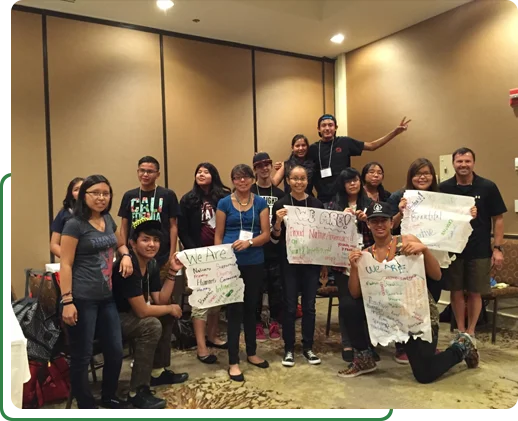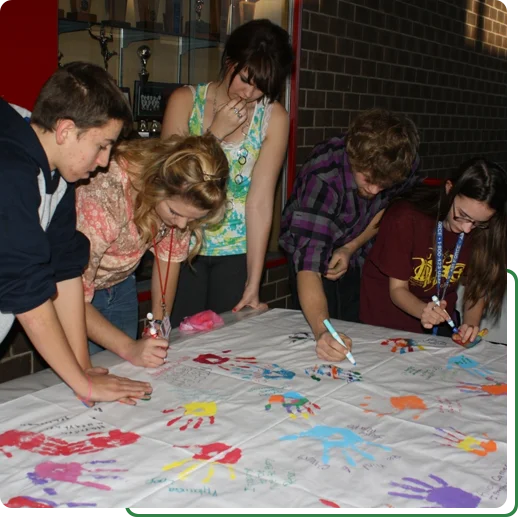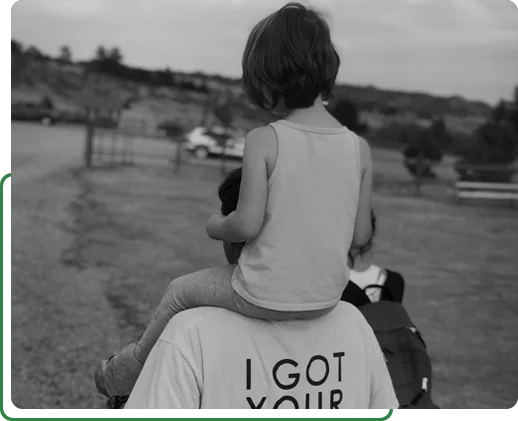

During the 2013-14, 2014-15, and 2015-16 school years, the daily attendance rate for freshmen was over 95 percent. During the same time, Central experienced a higher daily attendance rate and graduation rate, reduced crime rate, and a high level of civic engagement and volunteering.
In the 30 months following March 2008, Rapid City had one teenage suicide. This is not a number to celebrate, but it does show the power of a social network-designed approach to prevention. There were zero teenage suicides or student deaths from September 2011 through 2016 in Rapid City. Before then, Pennington County averaged twice the national average deaths by suicide
Most importantly, the graduating class of 2016 was the first in many years not to experience a death of a classmate – a milestone worth noting and completely attributable to the power of trained peer leaders and staff and their positive influence within their social networks. Similar results were seen at Pine Ridge (S.D.) High School after administrators started their own Peer Leader program in 2016 after experiencing their cluster of suicides.




Connectedness is a key factor in a student’s success in school, yet little or no time is spent discussing or developing programming that addresses this issue. Building connectedness to other peers and adults is achieved through focusing on social network health. The focus is not on a targeted group but building support networks for all students and staff.
Typically, a social network health approach is not considered in prevention and workplace programming, but instead the focus is on an individual’s behavior. As such, a person is removed from their social network, provided support and expected to return to their social network and function without issue. This approach stresses information and knowledge acquisition without providing space for the individual to practice new skills and be supported for new behaviors. As we have seen in the last 10 years, if knowledge and information were effective, we would not be seeing an increase in suicides, drug and alcohol use, and dropouts.




A Social Network Health-driven approach is not a checklist program. It is about developing positive connections to trusted adults/mentors, creating a sense of belonging within their environments, and providing opportunities to grow as an individual and be supported by the group. Checklists do not establish norms nor help students and staff understand their values around the decisions they make.
Even though the Social Network Health approach is not specifically a suicide, bullying or domestic violence prevention program, the impact of this comprehensive approach has had positive results with these issues. The foundational purpose of the Social Network Health approach is to build positive connections within a community. By implementing a system, supported by research and sound practices that promotes collaboration through a thoughtfully planned sequential approach, cultural change is possible which will result in lower maladaptive decision-making by students. Simply, it is the promotion of healthy decision-making that will support the wellness of the individual by building positive and supportive connections.
Finally, the success of programs in schools is directly related to the preparedness of all staff to implement that program and thus, create positive culture change. There is also a direct correlation to the training and support of staff and their ability to engage and guide their peers versus simply providing information.
Therefore, the first step in developing support for schools is to train the staff of the school. Workshops have been designed to build a participant’s connectedness by immersing them in an intentional and structured series of active learning and discussion activities that foster collaboration. Students and staff create an environment of support that motivates personal commitment for a collective culture through discussion and modeling. This approach provides the opportunity to experience the activities and gain significant insight into our own values and decision-making style. Importantly, they are given space to practice these new skills. Growth of the participant lives in this collaborative experience! This approach, which builds connectedness and models resiliency and coping skills, is the most effective method in developing a culture of support.



